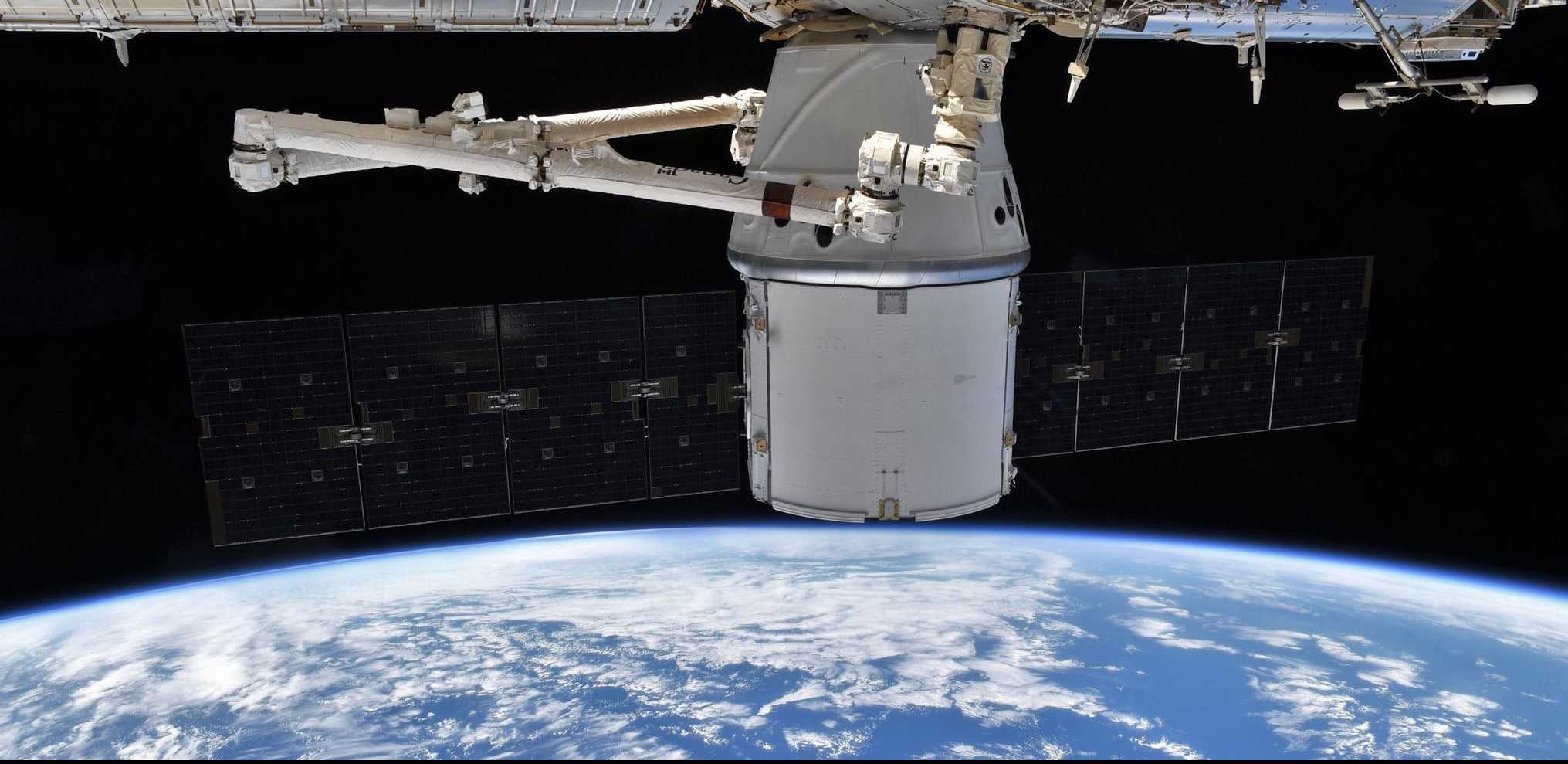

News
SpaceX Dragon spacecraft caught by robotic space station arm for the last time
On March 9th, SpaceX’s CRS-20 Cargo Dragon completed an uneventful journey to the International Space Station (ISS), where the spacecraft was successfully captured giant robotic arm for the last time.
Barring several major surprises, Dragon’s March 9th capture was the last time a SpaceX spacecraft berthed with a space station for the foreseeable future – possibly forever. Referring to the process of astronauts manually catching visiting vehicles and installing them on an airlock with a giant, robotic arm, berthing is a much younger technology than docking and was developed as an alternative for a few particular reasons. Perhaps most importantly, the Common Berthing Mechanism (CBM) ports used by Cargo Dragon, Cygnus, and HTV spacecraft are more than 60% wider than standard docking ports. In other words, spacecraft that berth can transport substantially larger pieces of cargo to and from the space station.
More significantly, however, the CBM standard came about in large part due to the decision to assemble the ISS out of 16 pressurized segments, each separately launched into orbit. Measuring about 1.25m (4.2 ft) wide, the CBM ports that connect most of the space station’s 16 livable segments make the ISS far more practical for the astronauts that crew it, while also allowing for larger hardware to be moved between each module. With Crew Dragon, design requirements meant that SpaceX had to move from berthing to docking, a trait SpaceX thus carried over when it chose to base its Cargo Dragon replacement on a lightly-modified Crew Dragon design.
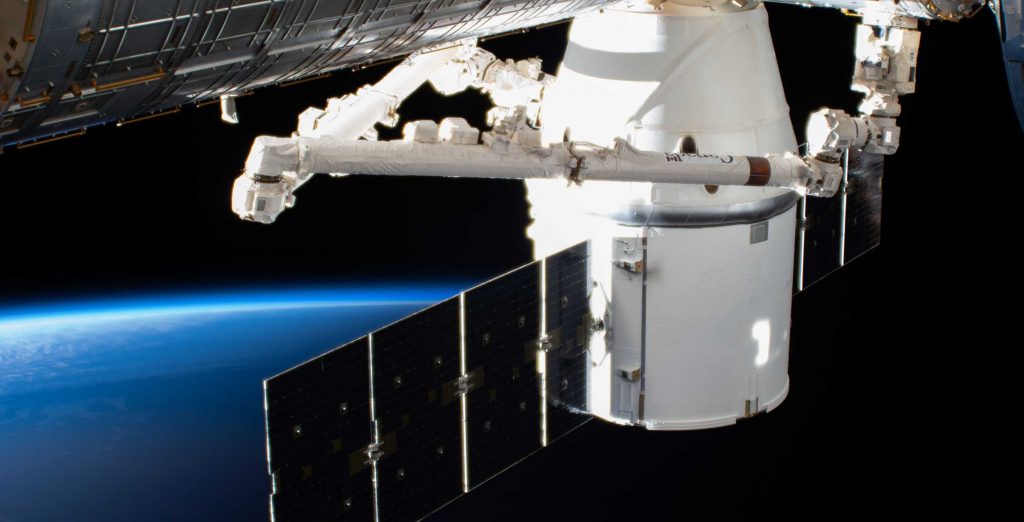
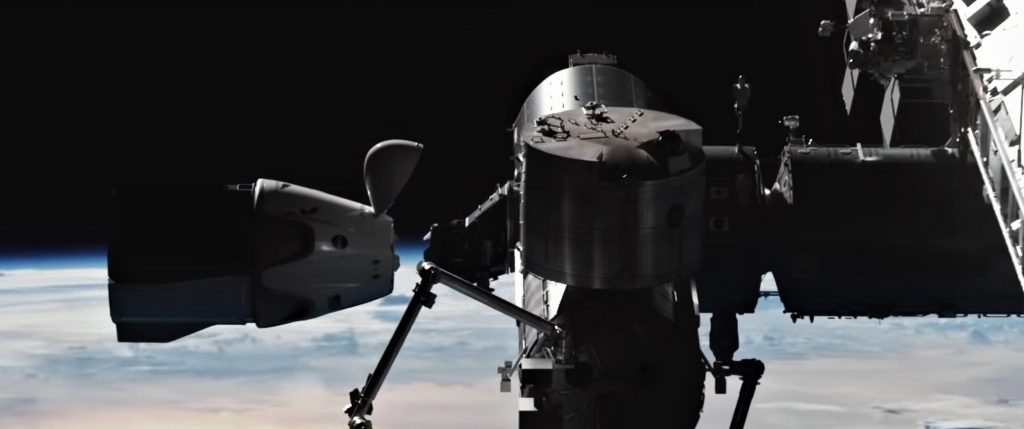
Now verging on routine, Cargo Dragon capsule C112 began its final approach to the International Space Station on March 9th, pausing at set keep-out zones while SpaceX operators waited for NASA and ISS approval to continue. After several stops, Dragon arrived at the last hold point – some 10m (33 ft) away from the station – and NASA astronaut Jessica Meir manually steered Canadarm2 to a successful capture, quite literally grabbing Dragon with a sort of mechanical hand.
At that point, Dragon – like a large ship arriving in port with the help of tugboats – is in the hands of external operators. At the ISS, Canadarm2 essentially flips itself around with Dragon still attached, carefully and slowly mating the spacecraft with one of the station’s free berthing ports. Unlike docking ports, the active part of a berthing port is located on the station’s receiving end, where electromechanical latches and bolts permanently secure the spacecraft to the station and ensure a vacuum seal.
Finally, once berthing is fully complete, ISS astronauts can manually open Dragon’s hatch, giving them access to the two or so metric tons (~4000 lb) of cargo typically contained within. All told, the process of berthing is relatively intensive and expensive in terms of the amount of time station astronauts and NASA ground control must spend to complete a single resupply mission. From start to finish, excluding training, berthing takes a crew of two station astronauts some 9-12 hours of near-continuous work from spacecraft approach to hatch open.
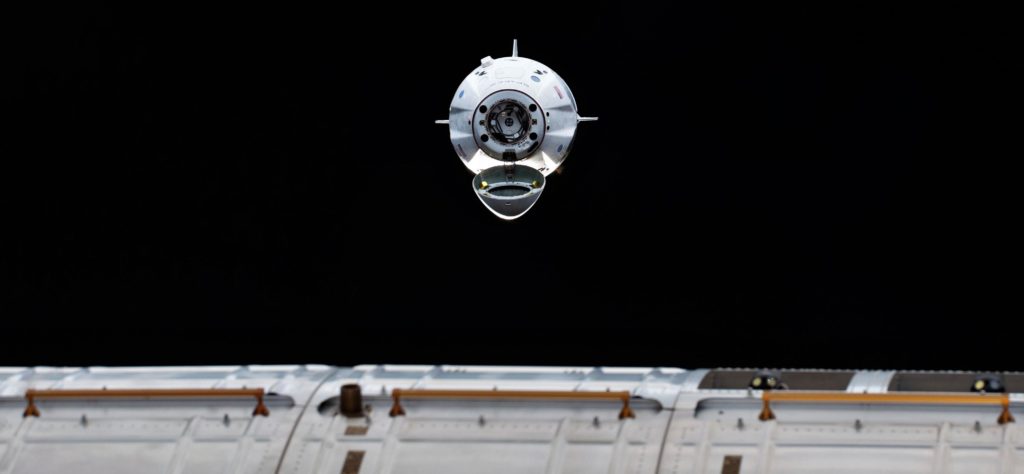
One definite benefit of the docking approach Crew Dragon and Cargo Dragon 2 will use is just how fast it is compared to berthing. Because docking is fundamentally autonomous and controlled by the spacecraft instead of the station, it significantly reduces the workload placed on ISS astronauts. Crew members must, of course, remain vigilant and pay close attention during the critical approach period, particularly with uncrewed Cargo Dragon 2 spacecraft. However, the assumption is always that the spacecraft will independently perform almost all tasks related to docking, short of actually offloading cargo and crew.
For now, CRS-20 will likely be SpaceX’s last uncrewed NASA cargo mission for at six months. CRS-21 – Cargo Dragon 2’s launch debut – is currently scheduled no earlier than (NET) Q4 2020. Nevertheless, Crew Dragon’s next launch – also its astronaut launch debut – could lift off as early as May 2020, just two months from now. With both SpaceX’s crew and cargo missions soon to consolidate around a single spacecraft, the odds are good that Dragon 2 will wind up flying far more than Dragon 1, and the start of its increasingly common launches is just around the corner.
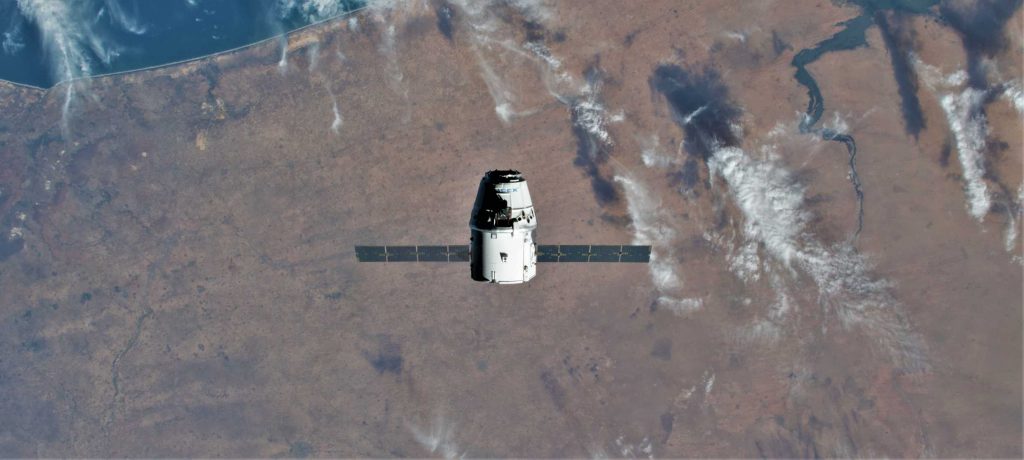
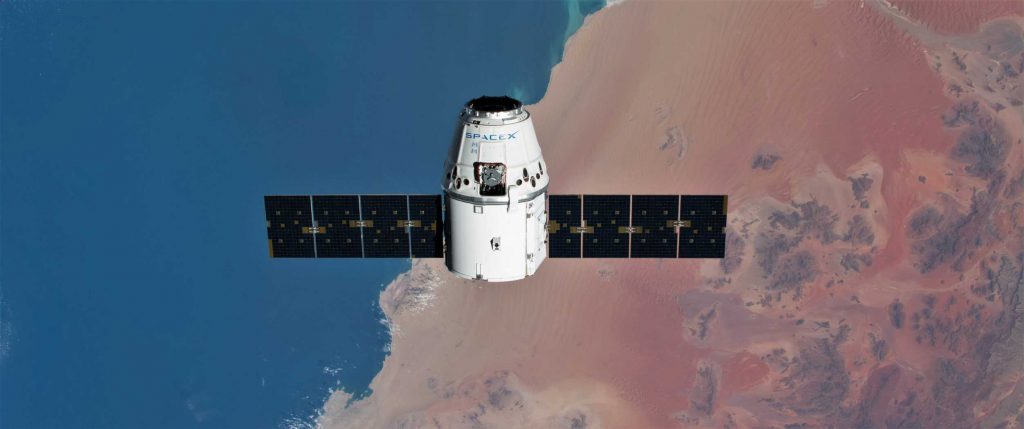

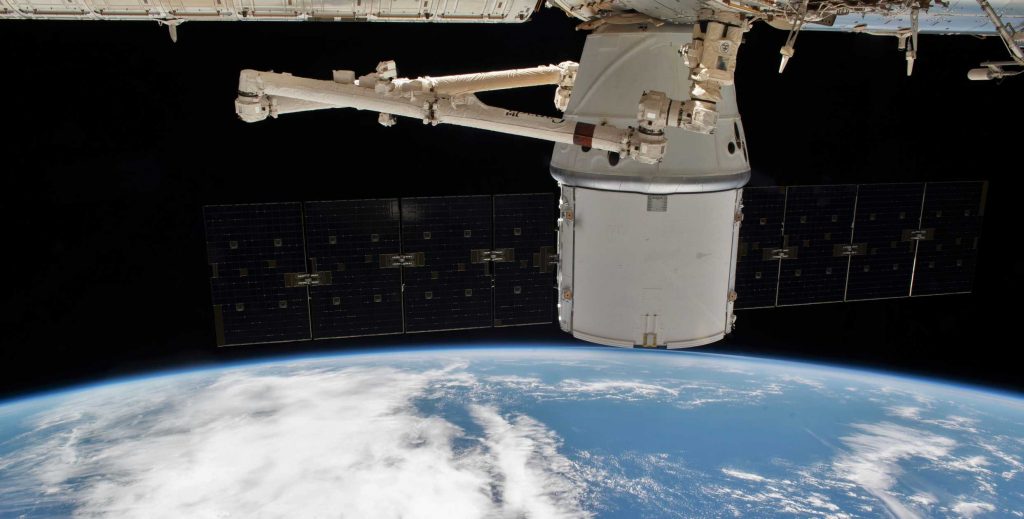
Check out Teslarati’s Marketplace! We offer Tesla accessories, including for the Tesla Cybertruck and Tesla Model 3.
News
Tesla cleared in Canada EV rebate investigation
Tesla has been cleared in an investigation into the company’s staggering number of EV rebate claims in Canada in January.

Canadian officials have cleared Tesla following an investigation into a large number of claims submitted to the country’s electric vehicle (EV) rebates earlier this year.
Transport Canada has ruled that there was no evidence of fraud after Tesla submitted 8,653 EV rebate claims for the country’s Incentives for Zero-Emission Vehicles (iZEV) program, as detailed in a report on Friday from The Globe and Mail. Despite the huge number of claims, Canadian authorities have found that the figure represented vehicles that had been delivered prior to the submission deadline for the program.
According to Transport Minister Chrystia Freeland, the claims “were determined to legitimately represent cars sold before January 12,” which was the final day for OEMs to submit these claims before the government suspended the program.
Upon initial reporting of the Tesla claims submitted in January, it was estimated that they were valued at around $43 million. In March, Freeland and Transport Canada opened the investigation into Tesla, noting that they would be freezing the rebate payments until the claims were found to be valid.
READ MORE ON ELECTRIC VEHICLES: EVs getting cleaner more quickly than expected in Europe: study
Huw Williams, Canadian Automobile Dealers Association Public Affairs Director, accepted the results of the investigation, while also questioning how Tesla knew to submit the claims that weekend, just before the program ran out.
“I think there’s a larger question as to how Tesla knew to run those through on that weekend,” Williams said. “It doesn’t appear to me that we have an investigation into any communication between Transport Canada and Tesla, between officials who may have shared information inappropriately.”
Tesla sales have been down in Canada for the first half of this year, amidst turmoil between the country and the Trump administration’s tariffs. Although Elon Musk has since stepped back from his role with the administration, a number of companies and officials in Canada were calling for a boycott of Tesla’s vehicles earlier this year, due in part to his association with Trump.
News
Tesla Semis to get 18 new Megachargers at this PepsiCo plant
PepsiCo is set to add more Tesla Semi Megachargers, this time at a facility in North Carolina.

Tesla partner PepsiCo is set to build new Semi charging stations at one of its manufacturing sites, as revealed in new permitting plans shared this week.
On Friday, Tesla charging station scout MarcoRP shared plans on X for 18 Semi Megacharging stalls at PepsiCo’s facility in Charlotte, North Carolina, coming as the latest update plans for the company’s increasingly electrified fleet. The stalls are set to be built side by side, along with three Tesla Megapack grid-scale battery systems.
The plans also note the faster charging speeds for the chargers, which can charge the Class 8 Semi at speeds of up to 1MW. Tesla says that the speed can charge the Semi back to roughly 70 percent in around 30 minutes.
You can see the site plans for the PepsiCo North Carolina Megacharger below.

Credit: PepsiCo (via MarcoRPi1 on X)

Credit: PepsiCo (via MarcoRPi1 on X)
READ MORE ON THE TESLA SEMI: Tesla to build Semi Megacharger station in Southern California
PepsiCo’s Tesla Semi fleet, other Megachargers, and initial tests and deliveries
PepsiCo was the first external customer to take delivery of Tesla’s Semis back in 2023, starting with just an initial order of 15. Since then, the company has continued to expand the fleet, recently taking delivery of an additional 50 units in California. The PepsiCo fleet was up to around 86 units as of last year, according to statements from Semi Senior Manager Dan Priestley.
Additionally, the company has similar Megachargers at its facilities in Modesto, Sacramento, and Fresno, California, and Tesla also submitted plans for approval to build 12 new Megacharging stalls in Los Angeles County.
Over the past couple of years, Tesla has also been delivering the electric Class 8 units to a number of other companies for pilot programs, and Priestley shared some results from PepsiCo’s initial Semi tests last year. Notably, the executive spoke with a handful of PepsiCo workers who said they really liked the Semi and wouldn’t plan on going back to diesel trucks.
The company is also nearing completion of a higher-volume Semi plant at its Gigafactory in Nevada, which is expected to eventually have an annual production capacity of 50,000 Semi units.
Tesla executive teases plan to further electrify supply chain
News
Tesla sales soar in Norway with new Model Y leading the charge
Tesla recorded a 54% year-over-year jump in new vehicle registrations in June.

Tesla is seeing strong momentum in Norway, with sales of the new Model Y helping the company maintain dominance in one of the world’s most electric vehicle-friendly markets.
Model Y upgrades and consumer preferences
According to the Norwegian Road Federation (OFV), Tesla recorded a 54% year-over-year jump in new vehicle registrations in June. The Model Y led the charge, posting a 115% increase compared to the same period last year. Tesla Norway’s growth was even more notable in May, with sales surging a whopping 213%, as noted in a CNBC report.
Christina Bu, secretary general of the Norwegian EV Association (NEVA), stated that Tesla’s strong market performance was partly due to the updated Model Y, which is really just a good car, period.
“I think it just has to do with the fact that they deliver a car which has quite a lot of value for money and is what Norwegians need. What Norwegians need, a large luggage space, all wheel drive, and a tow hitch, high ground clearance as well. In addition, quite good digital solutions which people have gotten used to, and also a charging network,” she said.
Tesla in Europe
Tesla’s success in Norway is supported by long-standing government incentives for EV adoption, including exemptions from VAT, road toll discounts, and access to bus lanes. Public and home charging infrastructure is also widely available, making the EV ownership experience in the country very convenient.
Tesla’s performance in Europe is still a mixed bag, with markets like Germany and France still seeing declines in recent months. In areas such as Norway, Spain, and Portugal, however, Tesla’s new car registrations are rising. Spain’s sales rose 61% and Portugal’s sales rose 7% last month. This suggests that regional demand may be stabilizing or rebounding in pockets of Europe.
-

 Elon Musk2 weeks ago
Elon Musk2 weeks agoTesla investors will be shocked by Jim Cramer’s latest assessment
-

 Elon Musk2 days ago
Elon Musk2 days agoxAI launches Grok 4 with new $300/month SuperGrok Heavy subscription
-

 Elon Musk4 days ago
Elon Musk4 days agoElon Musk confirms Grok 4 launch on July 9 with livestream event
-

 News1 week ago
News1 week agoTesla Model 3 ranks as the safest new car in Europe for 2025, per Euro NCAP tests
-

 Elon Musk2 weeks ago
Elon Musk2 weeks agoA Tesla just delivered itself to a customer autonomously, Elon Musk confirms
-

 Elon Musk1 week ago
Elon Musk1 week agoxAI’s Memphis data center receives air permit despite community criticism
-

 News2 weeks ago
News2 weeks agoXiaomi CEO congratulates Tesla on first FSD delivery: “We have to continue learning!”
-

 News2 weeks ago
News2 weeks agoTesla sees explosive sales growth in UK, Spain, and Netherlands in June



















